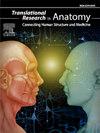大鼠坐骨神经挤压损伤后阴蒂的神经再生作用:形态学、形态计量学和功能分析
Q3 Medicine
引用次数: 0
摘要
背景:坐骨神经损伤的特点是腰骶区的放射性疼痛和相关的运动感觉缺陷,这仍然是一个具有挑战性的疾病,再生治疗有限。阴蒂(CT)是一种药用植物,以其神经保护和抗炎特性而闻名,在促进神经再生方面表现出了希望。本研究旨在评价CT提取物对大鼠坐骨神经挤压损伤模型的疗效和安全性。方法将54只Sprague-Dawley大鼠分为正常组、毒性对照组、阴性对照组(未处理损伤)、阳性对照组(甲钴胺素)和CT治疗组(250、500、1000 mg/kg/d,连续28 d)。结果肝脏和肾脏组织学证实ct治疗组无毒性。在第14天和第28天,通过步行轨迹分析、旋转杆、脚趾伸展反射和热板测试评估功能恢复,所有ct治疗组和阳性对照组均显示显著改善。肌肉组织学(腓肠肌、比目鱼肌和指长伸肌)和体重分析显示萎缩减少,再生增强,特别是在高剂量CT和阳性组。甲苯胺蓝和甲酚紫染色的形态计量学评估表明,髓鞘再生加速,神经元细胞体保存增加。透射电子显微镜(TEM)进一步显示治疗组髓鞘厚度增加。结论CT可促进轴突再生和功能恢复,无明显毒性。本研究提供了新的临床前证据,支持三阴蒂在周围神经损伤中的神经再生和保护潜力,突出了其作为未来转化应用的植物性治疗候选物的前景。本文章由计算机程序翻译,如有差异,请以英文原文为准。
Neuroregenerative effects of Clitoria ternatea in sciatic nerve crush injury: Morphological, morphometric, and functional analysis in rat model
Background
Sciatic nerve injury, characterised by radiating pain from the lumbosacral region and associated motor-sensory deficits, remains a challenging condition with limited regenerative therapies. Clitoria ternatea (CT), a medicinal plant known for its neuroprotective and anti-inflammatory properties, has shown promise in promoting nerve regeneration. This study aimed to evaluate the therapeutic efficacy and safety of CT extract in a rat model of sciatic nerve crush injury.
Methodology
A total of 54 Sprague-Dawley rats were divided into six groups: normal, toxicity control, negative control (injury without treatment), positive control (methylcobalamin), and three CT treatment groups (250, 500, and 1000 mg/kg/day for 28 days).
Results
Hepatic and renal histology confirmed no toxicity in CT-treated groups. Functional recovery was assessed on days 14 and 28 using walking track analysis, rotarod, toe-spreading reflex, and hot plate tests, all showing significant improvement in CT-treated and positive control groups. Muscle histology (gastrocnemius, soleus, and extensor digitorum longus) and weight analysis revealed reduced atrophy and enhanced regeneration, particularly in the high-dose CT and positive groups. Morphometric evaluation using toluidine blue and cresyl violet staining indicated accelerated remyelination and increased neuronal cell body preservation. Transmission electron microscopy (TEM) further demonstrated increased myelin sheath thickness in treated groups.
Conclusion
These findings suggest that CT promotes axonal regrowth and functional recovery without detectable toxicity. This study provides novel preclinical evidence supporting the neuro regenerative and protective potential of Clitoria ternatea in peripheral nerve injuries, highlighting its promise as a plant-based therapeutic candidate for future translational applications.
求助全文
通过发布文献求助,成功后即可免费获取论文全文。
去求助
来源期刊

Translational Research in Anatomy
Medicine-Anatomy
CiteScore
2.90
自引率
0.00%
发文量
71
审稿时长
25 days
期刊介绍:
Translational Research in Anatomy is an international peer-reviewed and open access journal that publishes high-quality original papers. Focusing on translational research, the journal aims to disseminate the knowledge that is gained in the basic science of anatomy and to apply it to the diagnosis and treatment of human pathology in order to improve individual patient well-being. Topics published in Translational Research in Anatomy include anatomy in all of its aspects, especially those that have application to other scientific disciplines including the health sciences: • gross anatomy • neuroanatomy • histology • immunohistochemistry • comparative anatomy • embryology • molecular biology • microscopic anatomy • forensics • imaging/radiology • medical education Priority will be given to studies that clearly articulate their relevance to the broader aspects of anatomy and how they can impact patient care.Strengthening the ties between morphological research and medicine will foster collaboration between anatomists and physicians. Therefore, Translational Research in Anatomy will serve as a platform for communication and understanding between the disciplines of anatomy and medicine and will aid in the dissemination of anatomical research. The journal accepts the following article types: 1. Review articles 2. Original research papers 3. New state-of-the-art methods of research in the field of anatomy including imaging, dissection methods, medical devices and quantitation 4. Education papers (teaching technologies/methods in medical education in anatomy) 5. Commentaries 6. Letters to the Editor 7. Selected conference papers 8. Case Reports
 求助内容:
求助内容: 应助结果提醒方式:
应助结果提醒方式:


